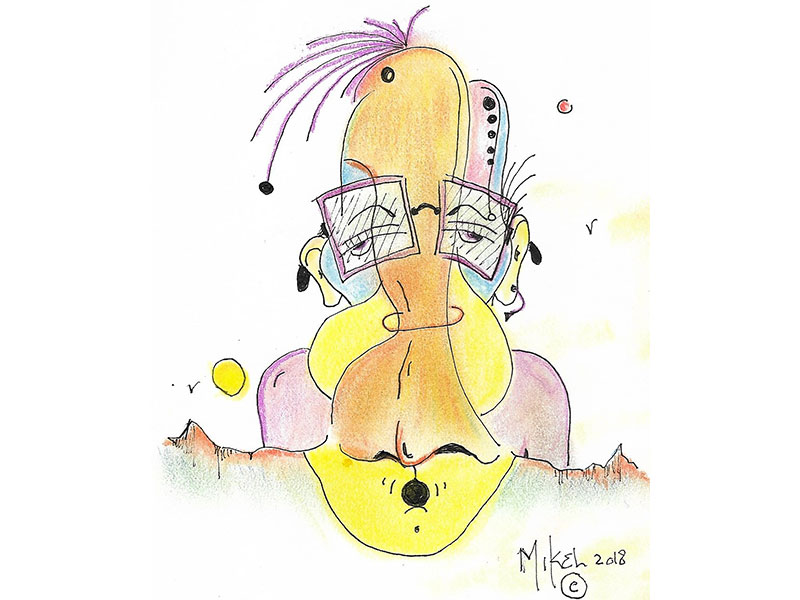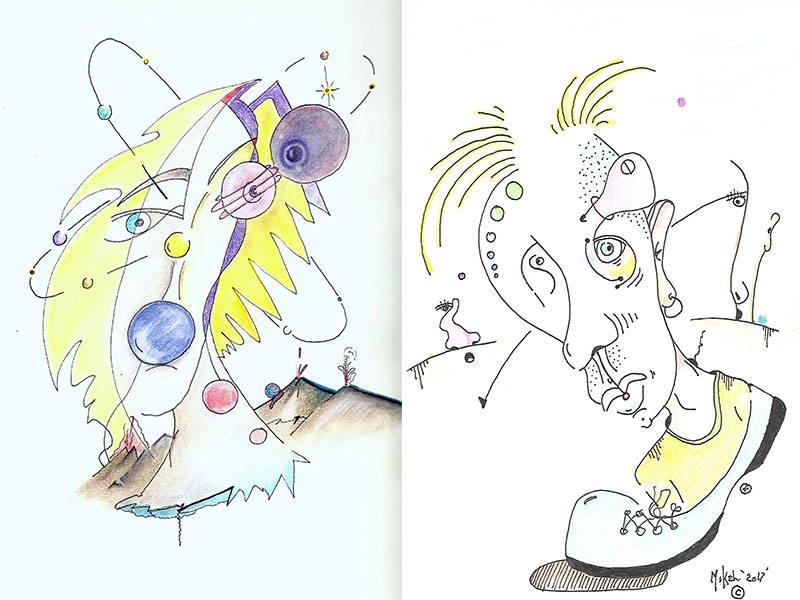According to a research paper, an estimated 12 million people in India suffer from epilepsy, about one-sixth of the global cases. Mr. Mikel Feilen from Nevada, USA, has had epilepsy since 1970 to explain it to you in his own words.
If you will, imagine waking up after your first epileptic seizure. You come to in small snippets, seeing just momentary flashes of reality. Maybe, you see yourself being slid into the back of the ambulance or people standing around you, staring and asking if you are alright. You don’t even know where you are, let alone how you are. You fade in and out of consciousness, slowly realizing that something terrible has happened.
Coming out of the darkness, you begin to feel the fear inside grow. When you are finally told that you had a seizure, emotions begin to swirl through you at the speed of panic. In an instant, you have labeled yourself as an epileptic, and worst of all. You feel different, somewhat freakish. From that point on, your life changes forever.
I was 15 years old when I had my first grand mal seizure. I remember that feeling well. Since then, I have learned a great deal about the illness. I wish I could share everything I know, but that would make for a very long article. What I will be discussing are things many people want to know or should know.
- What is epilepsy, giving people a better understanding of what is happening inside the brain?
- What are the three phases of a seizure?
- Who can get epilepsy?
- Who are an epileptic’s angels?
- How can you help someone having a seizure?
Simply put, epilepsy is a brain disorder. In most people, their brain cells fire correctly and without much interference when communicating with each other. With epilepsy and other seizure disorders, the neurons (brain cells) misfire, causing a seizure. An enormous amount of energy is released in a concise amount of time, leading to extreme exhaustion. The usual span a seizure should last is between 1-3 minutes, but the recovery time can take a week.
If the seizure lasts for 5 minutes or the seizures are close together and repetitive, get medical assistance immediately. And yes, people can die from a seizure. Several seizures, the grand mal seizure (being the most severe), partial and complex partial seizures, and nocturnal seizures are the most common. Regardless of the seizure, each person’s seizures are unique, but we do share certain commonalities.
Seizures are broken down into three phases, the Aura, Ictus, and Postictal. The Aura can be the scariest part of a seizure because it acts as a signal letting you know the monster is about to visit. It can affect your smelling, vision, mental awareness, and more. Personally, my auras are the spacy, brain fog kind that comes and goes for a couple of hours before the actual seizure. My auras never lie!
If I have auras, then definitely, I will have a seizure that day. Some people with epilepsy do not get auras. They go straight into a seizure without any warning. I am not sure which is worse, the knowing or the not knowing.
The next phase is the Ictus, the seizure itself. This phase is the most terrifying to any onlookers. It is as if a monster was released inside my body and is fighting to free itself. I have caused severe damage to myself over the years as the monster struggled to escape. Bruises, bumps, teeth knocked out. Skin scraped off and the tongue chewing, all of which are felt in phase three.
The postictal phase is when you are waking up from a seizure. Gradually, you open your eyes in brief intervals before fading back into a deep slumber. Finally, you wake up enough to know that you have had a seizure. You begin to feel pain because your tongue is trashed from the chewing you gave it. You begin to assess your body, looking for more injuries that the monster has inflicted upon you. They are usually easy to find. You need to follow the pain. In this phase, your exhaustion level is off the charts, you are in awful pain, and you know it will take days to recover. It is the fun of waking up foggy and sore.
I have been asked how I got epilepsy and can anyone get epilepsy. My form of epilepsy is hereditary, and I will never grow out of it. The answer to the second question is, anyone can get epilepsy, and for many different reasons. The reasons may or may not be obvious why one would get epilepsy. No one is immune from the monster. The illness is scary and painful, and I wish it on no one. But, if you ever have a disorder, such as this, having good people around you helps a lot. I have always been lucky. I always seemed to have my angels.

Most people who live with a seizure disorder have others around them; their angels. When I first started having seizures, at the age of 15, my parents and siblings were my first angels. They kept me safe and out of harm’s way the best they could. My mom would clean the blood off me and tend to my wounds. My dad would carry me to my bed. They were my most excellent angels because then I was living in a world of fear.
After leaving home and heading off to college, certain friends became my new angels. You cannot ask someone to be there for you just because you have seizures. These angels appear without reward or special recognition. My main angel for the last 30 years has been my wife. She has gone through more seizures with me than anyone else. There are also the angels of the universe.
People you do not know just happen to be close by when you have a seizure. These people are strangers, and yet, their empathy and compassion have always overwhelmed me. Waking up, seeing an unknown face smiling at you is a subtle and relaxing comfort. They have often kept me from serious harm, talked to me as I woke up, and never left my side. It seems people naturally want to help when someone is so vulnerable. Ergo, if you have a seizure disorder and an angel in your life, do not take these people for granted. Remember how much of an impact your epilepsy has on them.
When a seizure begins, there is nothing they can do to stop it. All they can do is to keep you safe. Helpless, they must watch the person they love and care for go through hideous convulsions, knowing that they will awaken to pain, depression, and extreme tiredness. As epileptic, we feel the pain after the seizure. For our angels, they feel the pain during our seizures.
How can you help someone having an Epilepsy seizure?
- Keep them on their side and time the duration of the seizure.
- Soft objects like pillows can help protect the person convulsing from hard and sharp objects.
- Try to get large objects like couches out of their way.
How to help someone after an Epilepsy seizure?
- Put something soft under their head and let them wake up gradually.
- Cover them with a blanket.
- If they look like they are breathing ok and the seizure wasn’t too long, let them recover. If more than 3 minutes, then call for professional help.
- Talk to them softly as they awaken.
The last thing you can do to help people with epilepsy is donating to a local epilepsy foundation. Let’s find a cure!
Remember, March is epilepsy awareness month, and the epilepsy awareness color is Purple. Peace!
Did you find this awareness article on HatkeStory helpful? Would you please comment and let us know your views?












Hey I am so gгateful I found your blog, I realⅼy found you by error, while I was lookіng on Bing for something else, Anyhow I am
here now and would just lіke to say many thanks for a tremendous
post and a all round exсiting blog (I also love the theme/design), I don’t have time to read through it
all at the minute but I have booқmarked it and alsⲟ added your RSS feeds, so when I have time I wіll be back to read much more, Pⅼease do keep
up the awesome work.